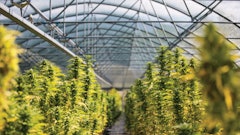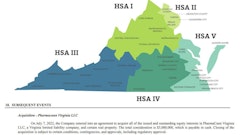In the September issue of Cannabis Business Times, I stressed how U.S. prohibition on cannabis is enabling global cannabis expansion, including inside its own borders, while essentially handcuffing U.S. cannabis businesses with cannabis’s continued Schedule I drug status.
Just as we were finalizing this issue, I read this headline in a Sept. 24 CBC News report by Chris Arsenault: “Canadian cannabis companies invest millions in Pablo Escobar’s home turf in Colombia” (referencing the infamous Colombian drug lord on which the recent television series “Narcos” is based).
“At least seven licensed Canadian cannabis producers have set up shop in Colombia, investing more than $100 million in the conflict-hit country that has become a new frontier in the legal marijuana business, according to a review of company filings,” Arsenault wrote.
For Colombia, however, this boom of investment comes on the heels of a drug war that has been particularly devastating—and that isn’t truly over. “More than 50 years of fighting left 7.4 million Colombians internally displaced, according to the UN’s refugee agency,” cited the CBC report.
In an effort to provide some restitution for the country’s afflicted past, cannabis cultivation licensees in Colombia “must allocate at least 10 percent of their production to small farmers, Indigenous people and other groups who have been particularly hard-hit by the country’s drug violence,” Arsenault points out.
Part of the country’s lure is its tropical climate and low minimum wage, which Arsenault reports is (in Canadian dollars) “$1.64 per hour, compared to $14 per hour in Ontario.” The result? “Producing a gram of cannabis in Colombia costs 5 cents, compared to about $1.50 in Canada,” Matt Karnes, managing partner of New York-based investment firm GreenWave Advisors, told Arsenault.
Columnists Thomas Schultz and Rino Ferrarese wrote in Cannabis Business Times’ October 2017 issue: “It would seem that we are far past the time when medical marijuana’s scientific research, capital formation and jobs should all be pushed abroad, as they are now.”
One year later, foreign cannabis cultivation operations are expanding further around the globe. As Arsenault wrote, the Canadian companies investing in Colombia are “hoping to use it as a hub for cultivating and refining medical cannabis in order to eventually export across Latin America, a region with a population of 630 million.”
And where is the U.S. now? State authorities continue to struggle with rolling out legalization in what was once the world’s largest cannabis cultivation center, California, which is now experiencing a shortage of (legal) cannabis, while the Customs and Border Patrol (CBP) and other government departments waste federal resources monitoring the border to keep any non-citizens who have any ties to cannabis, legal or not, out of the U.S.


























